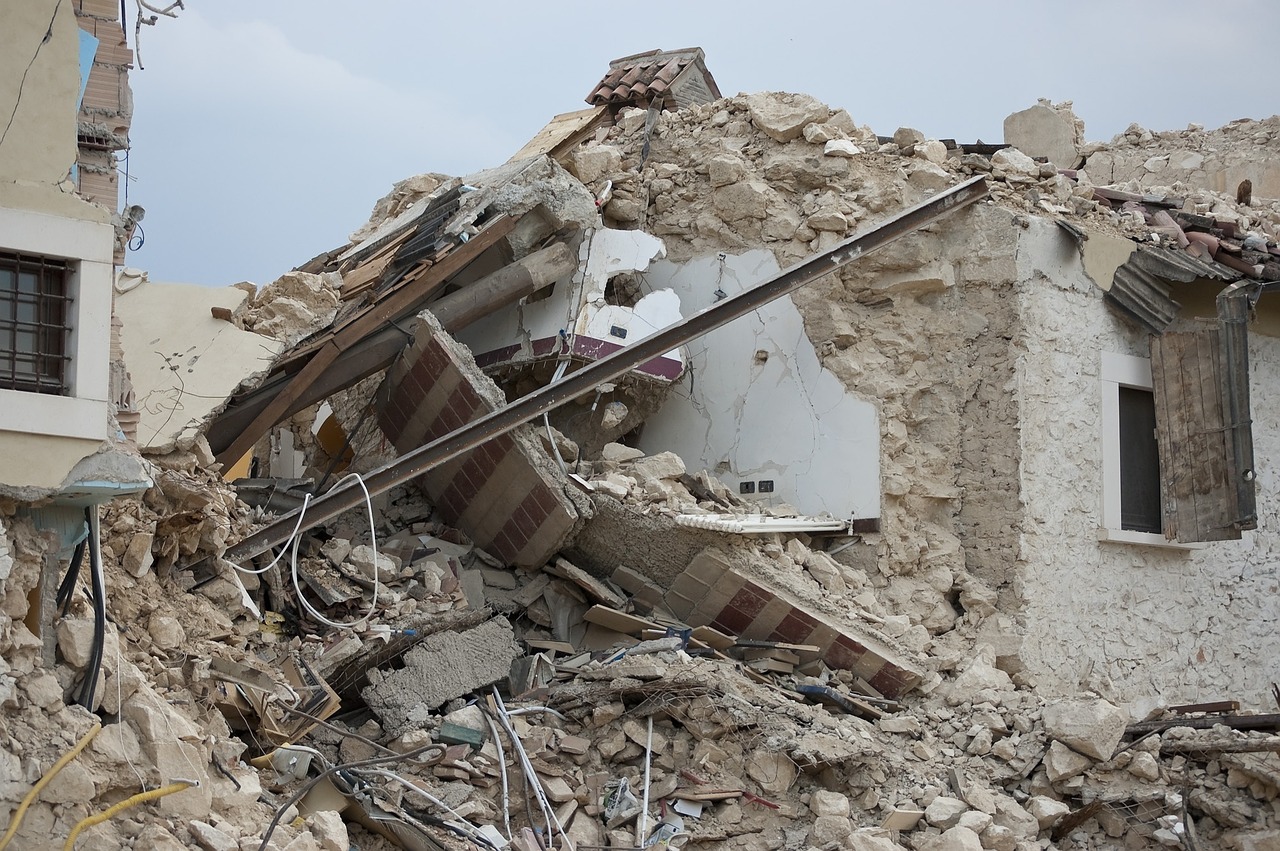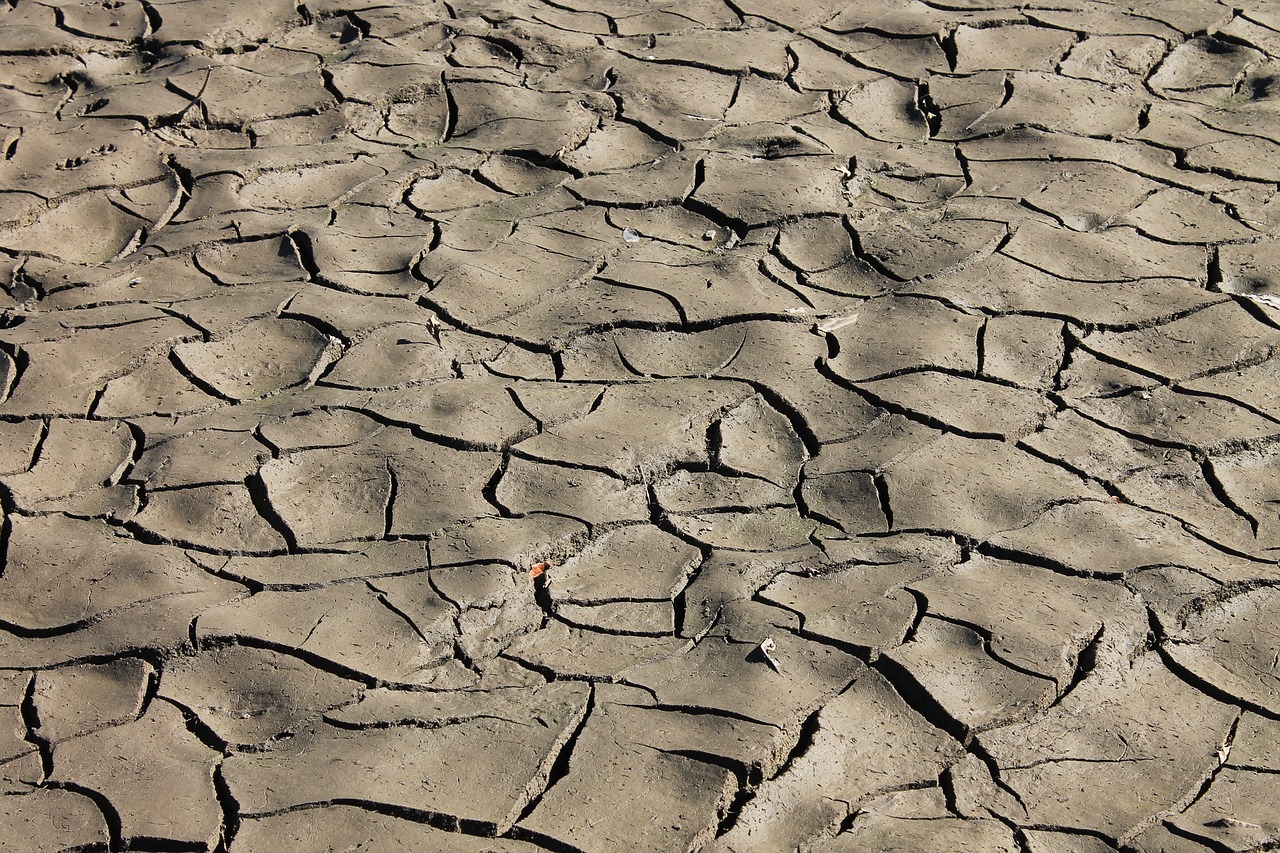The Role of Architecture in Disaster Planning
In a world where the unpredictability of natural and man-made disasters looms large, the role of architecture in disaster planning has never been more critical. Architecture is not just about aesthetics; it’s about creating spaces that are safe, functional, and resilient in the face of calamity. Imagine a building that not only serves as a home or a school but also stands firm against the fury of nature. This article dives deep into how innovative designs, sustainable practices, and community resilience come together through architecture to prepare for and recover from disasters.
Disasters can strike at any moment, leaving communities vulnerable and unprepared. The architectural response to these challenges can significantly influence the survival and recovery of affected populations. By integrating disaster preparedness into the design process, architects can craft buildings and infrastructure that not only withstand extreme conditions but also facilitate quick recovery. But how do we achieve this? It all starts with understanding the risks and designing with those risks in mind.
Architects have the unique ability to shape environments that can adapt to changing circumstances. They can use their skills to create structures that not only protect against disasters but also promote sustainability and community well-being. For instance, consider how a well-designed community center can serve as a shelter during a storm and a hub for recovery efforts afterward. This dual purpose highlights the importance of forward-thinking architectural design in disaster planning.
Furthermore, the integration of technology and innovative materials into architectural practices has revolutionized how we approach disaster resilience. From earthquake-resistant structures to flood-proof designs, the possibilities are endless. As we explore this topic, we will uncover the principles that guide architects in creating resilient structures, the sustainable practices that benefit both the environment and community, and the vital role of community engagement in the planning process.
Ultimately, architecture in disaster planning is about more than just building codes and regulations; it’s about fostering a culture of preparedness and resilience. By prioritizing innovative design, sustainability, and community involvement, architects can help create a safer, more resilient world. So, the next time you step into a building, think about the thought and care that went into its design, especially in the context of disaster preparedness.
- What is the role of architecture in disaster preparedness?
Architecture plays a crucial role by designing buildings and spaces that can withstand disasters and facilitate recovery. - How can sustainable practices enhance disaster resilience?
Sustainable practices reduce environmental impact and promote community health, making recovery easier and faster after a disaster. - Why is community engagement important in disaster planning?
Community engagement ensures that local knowledge and needs are considered, leading to more effective and relevant disaster planning initiatives.

Understanding Disaster Risks
Understanding disaster risks is more than just a precaution; it's a vital part of ensuring the safety and resilience of our communities. Disasters come in various forms, ranging from natural calamities like earthquakes and hurricanes to man-made crises such as industrial accidents and terrorist attacks. Each type of disaster carries its own set of risks and potential impacts. For instance, natural disasters can be unpredictable and devastating, often leading to loss of life, destruction of property, and long-term economic disruption.
To effectively plan for these disasters, we must first recognize their frequency and the specific vulnerabilities of our communities. According to recent studies, the frequency of natural disasters has increased significantly over the past few decades, largely due to climate change. This escalation means that we need to be proactive rather than reactive in our approach to disaster planning. For example, areas prone to flooding must consider their unique geographical challenges when developing infrastructure and emergency plans.
Let’s break down the two main categories of disasters:
- Natural Disasters: These include events like earthquakes, floods, hurricanes, and wildfires. Their occurrence can be influenced by environmental factors, and they often strike with little warning.
- Man-Made Disasters: These disasters result from human actions, such as industrial accidents, terrorist attacks, or nuclear incidents. Their impact can be mitigated through strict regulations and safety protocols.
Understanding the potential impacts of these disasters is crucial. Communities can suffer from:
- Loss of life and injury
- Destruction of infrastructure and homes
- Long-term economic setbacks
- Psychological effects on residents
Moreover, the social fabric of a community can be severely affected. Families may be displaced, and local businesses might struggle to recover. The ripple effects of disasters can linger, making it essential for architecture and urban planning to incorporate risk assessment into their designs.
In summary, recognizing the various types of disasters and their potential impacts is the cornerstone of effective disaster planning. By understanding these risks, communities can develop robust strategies that not only prepare for potential disasters but also enhance their resilience in the face of adversity. This proactive approach is essential for safeguarding lives and preserving the integrity of our built environments.

Architectural Design Principles
When it comes to disaster planning, are paramount. These principles not only focus on the aesthetics of buildings but also emphasize safety, sustainability, and functionality. In areas prone to natural disasters, such as earthquakes, floods, or hurricanes, architects must consider how their designs can withstand these forces of nature while also serving the needs of the community. The integration of resilient structures is one of the core aspects of effective disaster planning. This means that buildings are not just constructed to look good; they are engineered to endure.
One of the most critical aspects of architectural design in disaster-prone areas is the selection of materials. For instance, using materials that are fire-resistant, waterproof, and wind-resistant can significantly enhance a structure's ability to withstand extreme conditions. Consider the following table that outlines some common materials used in resilient architecture:
| Material | Benefits |
|---|---|
| Reinforced Concrete | High durability and strength, resistant to fire and water damage |
| Steel | Excellent tensile strength, flexible under stress, and resistant to earthquakes |
| Cross-Laminated Timber | Lightweight, sustainable, and can absorb shock during seismic events |
| Fiber-Reinforced Polymers | Corrosion-resistant and can be molded into various shapes for design flexibility |
Moreover, adaptive reuse of existing structures is another innovative approach within architectural design principles. Instead of demolishing buildings after a disaster, architects can repurpose them for new uses, which not only conserves resources but also preserves the cultural heritage of the community. This method can breathe new life into old structures and foster a sense of continuity and belonging among residents. For example, a former school building can be transformed into a community center, offering a space for education and recovery efforts.
In addition to material selection and adaptive reuse, sustainable practices play a crucial role in architectural design for disaster resilience. By implementing eco-friendly designs, architects can create buildings that are not only resilient to disasters but also beneficial for the environment. This includes using renewable energy sources, optimizing water usage, and incorporating green spaces that can help manage stormwater runoff. Such practices not only reduce the impact of disasters but also contribute to the long-term health of the community.
Ultimately, the principles of architectural design in disaster planning must be rooted in a deep understanding of the specific risks faced by a community. By prioritizing resilience, sustainability, and community needs, architects can create spaces that not only endure the challenges of disasters but also thrive in their aftermath. This proactive approach ensures that communities are better prepared, more resilient, and capable of recovering more quickly when disaster strikes.
- What are resilient structures? Resilient structures are buildings designed to withstand extreme environmental conditions, minimizing damage and ensuring safety during disasters.
- How does adaptive reuse benefit communities? Adaptive reuse helps preserve cultural heritage, reduces waste, and can revitalize neighborhoods by giving old buildings new purposes.
- What sustainable practices can be integrated into disaster planning? Sustainable practices include using renewable energy, optimizing water use, and incorporating green spaces to manage stormwater.

Resilient Structures
When we think about disasters, whether they be natural calamities like earthquakes and hurricanes or human-made crises such as industrial accidents, one thing becomes crystal clear: the need for is paramount. Resilience in architecture isn't just a buzzword; it's a lifeline for communities facing the unpredictable wrath of nature or human error. So, what does it mean for a structure to be resilient? It means that the building can withstand extreme conditions, protecting not only the physical structure but also the lives within it.
To achieve this level of resilience, architects and engineers employ a variety of materials and techniques that enhance durability and longevity. For instance, structures designed in earthquake-prone areas often incorporate flexible materials that can absorb shocks, allowing buildings to sway rather than crack under pressure. Similarly, in flood-prone regions, elevated structures and effective drainage systems can make all the difference. It's like building a ship that can sail through a storm rather than one that sinks at the first sign of trouble.
Moreover, the concept of resilient structures goes beyond just the materials used; it encompasses the entire design philosophy. For example, consider the following key components that contribute to resilient architecture:
- Load-Bearing Walls: These walls provide structural integrity, ensuring that buildings can withstand lateral forces during events like earthquakes.
- Wind-Resistant Features: Structures in hurricane-prone areas often include aerodynamic designs that reduce wind pressure.
- Fire-Resistant Materials: Utilizing materials that can withstand high temperatures is essential in areas susceptible to wildfires.
In addition to these elements, the integration of technology plays a significant role in modern resilient architecture. Smart building technologies can monitor structural health in real-time, alerting owners and authorities about potential issues before they escalate. Imagine a building that can "talk" to you, letting you know when it's feeling under pressure or when its foundations are shifting. This not only enhances safety but also allows for timely interventions that can save lives and property.
As we navigate the complexities of climate change and urbanization, the importance of resilient structures cannot be overstated. They serve as a foundation for community safety and recovery, acting as bastions of hope in times of crisis. In a world where disasters can strike at any moment, investing in resilient architecture is not just a smart choice—it's a necessity.

Innovative Materials
In the world of architecture, the quest for innovation never ceases, especially when it comes to materials that can withstand the unpredictable forces of nature. When we talk about disaster resilience, innovative materials play a pivotal role in shaping how structures respond to extreme conditions. Imagine a building that not only stands tall against hurricanes but also adapts to its environment. This is not just a dream; it's becoming a reality with advancements in material science.
One of the most exciting developments in this field is the use of smart materials. These materials can change properties in response to environmental stimuli. For instance, there are materials that can adjust their thermal insulation based on temperature changes, ensuring that buildings remain energy-efficient while also providing comfort. This adaptability can be crucial during disasters, as it helps maintain structural integrity and safety.
Another innovative approach involves the incorporation of biodegradable materials. These materials are not only sustainable but also reduce the environmental impact of construction. In disaster-prone areas, where rebuilding efforts can lead to significant waste, using materials that decompose naturally can help preserve the ecosystem while providing the necessary strength and durability. Picture a community rebuilding after a flood, using materials that will not leave a lasting scar on the landscape. It’s a win-win!
Moreover, the use of recycled materials is gaining traction in disaster resilience architecture. Utilizing materials salvaged from previous structures can significantly reduce the carbon footprint of new constructions. For example, recycled steel and reclaimed wood not only contribute to sustainability but also offer unique aesthetic qualities that enrich the architectural landscape. This approach not only addresses the immediate need for building materials but also fosters a culture of recycling and conservation within communities.
To further illustrate the impact of innovative materials, consider the following table that highlights some key types of materials and their benefits:
| Material Type | Benefits |
|---|---|
| Smart Materials | Adaptive properties for enhanced safety and energy efficiency |
| Biodegradable Materials | Environmentally friendly, reduces waste in rebuilding |
| Recycled Materials | Lower carbon footprint, unique aesthetic qualities |
As we look towards the future, the integration of these innovative materials into architectural designs will not only help in disaster preparedness but will also redefine the way we think about construction. It’s about building not just for today, but for a resilient tomorrow. The challenge lies in educating architects, builders, and communities about these materials and how they can be harnessed effectively. The more we embrace innovation, the stronger and more adaptable our built environment will become.
- What are smart materials? Smart materials can change their properties in response to environmental conditions, enhancing a structure's resilience.
- How do biodegradable materials benefit disaster recovery? They reduce waste and environmental impact, making rebuilding efforts more sustainable.
- Why is the use of recycled materials important? It lowers the carbon footprint of construction and promotes a culture of sustainability.
- How can communities learn about innovative materials? Through educational programs, workshops, and collaboration with architects and builders.

Adaptive Reuse
Adaptive reuse is an innovative architectural concept that breathes new life into old structures. Instead of demolishing buildings that have outlived their original purpose, architects and urban planners are increasingly recognizing the value of repurposing these spaces. This approach not only conserves resources but also preserves the cultural heritage of communities. Imagine transforming a historic factory into a vibrant community center or converting an old warehouse into chic loft apartments. These transformations exemplify the potential of adaptive reuse to meet contemporary needs while honoring the past.
One of the most significant advantages of adaptive reuse is its ability to reduce waste. In a world where sustainability is becoming paramount, reusing existing structures minimizes the environmental impact associated with new construction. By repurposing materials and reducing the demand for new resources, adaptive reuse contributes to a more sustainable urban environment. For instance, when a building is renovated instead of demolished, the materials used in its construction can often be salvaged and reused, which is a huge win for the planet.
Moreover, adaptive reuse projects can bolster local economies. By revitalizing unused or underutilized spaces, communities can attract new businesses and residents. This influx often leads to increased foot traffic and a vibrant local economy, as seen in many urban areas that have embraced this approach. For example, in cities like Detroit and New Orleans, old industrial buildings have been transformed into art galleries, restaurants, and boutique hotels, creating a unique blend of history and modernity that draws visitors and locals alike.
However, the success of adaptive reuse depends on thoughtful planning and community involvement. Engaging local stakeholders in the design process ensures that the new use of the building aligns with the needs and desires of the community. This participatory approach not only fosters a sense of ownership among residents but also enhances the relevance of the project. By incorporating local knowledge and preferences, architects can create spaces that truly resonate with their users.
In conclusion, adaptive reuse is more than just a trend; it is a forward-thinking strategy that addresses the challenges of urban development while respecting the past. By embracing this innovative approach, communities can enhance their resilience in the face of disasters, promote sustainability, and foster economic growth. As we look to the future, the potential for adaptive reuse in disaster recovery and urban planning is immense, paving the way for more resilient and vibrant communities.
- What is adaptive reuse?
Adaptive reuse is the process of repurposing old buildings for new uses while retaining their historical significance and structural integrity.
- Why is adaptive reuse important?
It reduces waste, conserves resources, preserves cultural heritage, and can stimulate local economies by revitalizing neighborhoods.
- How does adaptive reuse contribute to sustainability?
By reusing existing structures, adaptive reuse minimizes the need for new materials and the environmental impact associated with demolition and new construction.
- Can any building be adapted for reuse?
While many buildings can be adapted, the feasibility depends on factors such as structural integrity, zoning laws, and community needs.

Sustainable Practices
Sustainability in architecture is not just a buzzword; it's a vital approach that shapes how we build and interact with our environment. In the context of disaster planning, serve a dual purpose: they mitigate the impacts of disasters and promote the long-term health of communities. Imagine a world where buildings not only withstand the forces of nature but also enhance the ecosystem around them. This is the vision that sustainable architecture strives to achieve.
One of the key aspects of sustainable practices is the use of renewable resources. By utilizing materials that are replenished naturally, architects can significantly reduce the carbon footprint of their projects. For instance, bamboo, reclaimed wood, and recycled metals are becoming increasingly popular. These materials are not only environmentally friendly but also often possess unique aesthetic qualities that can enhance the overall design of a structure.
Moreover, sustainable architecture emphasizes energy efficiency. Buildings designed with energy-efficient systems can drastically reduce energy consumption, which is crucial during and after a disaster. For example, incorporating solar panels and green roofs can help buildings generate their own energy and manage stormwater effectively. These features not only help in disaster scenarios but also provide long-term savings for the community.
Another important element is the concept of community integration. Sustainable architecture encourages designs that are in harmony with their surroundings. This means considering local climate, culture, and community needs during the planning phase. A well-integrated building can serve as a refuge during disasters, providing shelter and resources to those affected. For instance, community centers designed with sustainable practices can double as emergency shelters, equipped with necessary supplies and facilities.
To further illustrate the impact of sustainable practices, consider the following table that highlights some common sustainable architectural strategies:
| Strategy | Description | Benefits |
|---|---|---|
| Passive Solar Design | Utilizes natural sunlight for heating and lighting. | Reduces energy costs and enhances comfort. |
| Rainwater Harvesting | Collects and stores rainwater for irrigation and non-potable uses. | Conserves water and reduces runoff. |
| Natural Ventilation | Enhances airflow through strategic window placement. | Improves indoor air quality and reduces reliance on HVAC systems. |
Incorporating these strategies into disaster planning not only prepares buildings to withstand catastrophic events but also fosters a sense of community resilience. By engaging local stakeholders in the design process, architects can ensure that their projects meet the specific needs of the community, making them more relevant and effective in times of crisis.
Ultimately, in architecture go beyond just building structures; they create environments that nurture life, promote health, and prepare communities for the unexpected. As we move forward, embracing these practices will be crucial in shaping resilient communities capable of facing any disaster head-on.
- What are sustainable architectural practices? Sustainable architectural practices involve designing buildings that minimize environmental impact, maximize energy efficiency, and integrate harmoniously with their surroundings.
- How do sustainable practices help in disaster planning? They enhance the resilience of buildings, reduce energy consumption, and ensure that structures can serve multiple purposes, such as providing shelter during emergencies.
- What materials are commonly used in sustainable architecture? Common materials include bamboo, reclaimed wood, recycled metals, and other renewable resources that have a lower environmental impact.

Community Engagement in Planning
In the realm of disaster planning, community engagement is not just a buzzword; it’s the heartbeat of effective strategies. When communities come together, their collective knowledge and experiences can significantly enhance the planning process. Imagine a community as a tapestry, where each thread represents a unique perspective or piece of information. When woven together, these threads create a robust fabric that can withstand the storms of disaster. By actively involving community members in the planning stages, architects and planners can design solutions that are not only practical but also deeply rooted in the local context.
One of the most effective ways to engage communities is through participatory design. This approach allows residents to share their insights and preferences, ensuring that the resulting architectural plans resonate with their needs and aspirations. For instance, consider a neighborhood that has experienced flooding in the past. Local residents may have firsthand knowledge of which areas are most vulnerable, what types of infrastructure have failed, and what solutions they envision. By incorporating these insights into the design process, planners can create structures that are more resilient and tailored to the community's unique challenges.
Moreover, education plays a pivotal role in fostering community engagement. When residents understand the risks they face and the architectural solutions available, they become empowered advocates for their own safety. Educational programs can take various forms, such as workshops, community meetings, or even interactive online platforms. These initiatives can cover topics like disaster preparedness, sustainable practices, and the importance of resilient infrastructure. By equipping communities with knowledge, we not only enhance their preparedness but also encourage them to participate actively in the planning process.
To illustrate the importance of community engagement in disaster planning, let’s take a look at some key strategies:
- Workshops and Forums: Hosting regular workshops allows community members to voice their concerns and ideas, fostering a sense of ownership over the planning process.
- Surveys and Feedback Forms: Gathering input through surveys can help planners understand the specific needs and preferences of the community.
- Collaborative Projects: Involving community members in hands-on projects, such as building community gardens or creating emergency response plans, can strengthen bonds and enhance resilience.
Ultimately, the goal of community engagement in disaster planning is to create a sense of shared responsibility. When residents feel that their voices matter, they are more likely to take proactive steps to prepare for potential disasters. This sense of ownership not only enhances the effectiveness of disaster plans but also fosters a stronger, more resilient community. After all, when disaster strikes, it’s the strength of community ties that often makes the difference between chaos and coordinated response.
Q1: Why is community engagement important in disaster planning?
A1: Community engagement brings local knowledge and perspectives into the planning process, leading to more effective and tailored solutions.
Q2: What are some effective ways to engage the community?
A2: Effective methods include workshops, surveys, and collaborative projects that encourage active participation and feedback from community members.
Q3: How does education contribute to community engagement?
A3: Education empowers residents by providing them with knowledge about risks and solutions, encouraging them to take an active role in the planning process.

Participatory Design
Participatory design is a revolutionary approach to architecture that emphasizes the importance of involving community members in the design process. Imagine a neighborhood where the people who live there have a say in how their environment is shaped. This method not only enhances the relevance of disaster planning initiatives but also fosters a sense of ownership among residents. When communities are actively engaged, they can share their unique insights and experiences, which can lead to more effective and tailored architectural solutions.
One of the key benefits of participatory design is that it empowers individuals. When community members contribute their ideas, they are more likely to feel invested in the outcome. This investment can lead to increased vigilance and preparedness in the face of potential disasters. Think of it this way: if you help build a sandcastle, you’re more likely to protect it from the incoming tide than if you just stumbled upon it on the beach. In the same vein, when people feel a connection to their environment, they are motivated to take action to safeguard it.
Moreover, participatory design encourages a collaborative atmosphere where diverse perspectives can flourish. This is particularly important in disaster planning, as different groups may have varying experiences and needs. For instance, elderly residents may require specific accessibility features, while families with young children might prioritize safe play areas. By bringing these voices to the table, architects can create designs that accommodate a wide range of needs, ultimately leading to more resilient communities.
To illustrate the effectiveness of participatory design, consider the following elements that can be integrated into the process:
- Workshops: Organizing community workshops allows residents to brainstorm ideas and express their concerns. These gatherings can be both informative and empowering.
- Surveys: Distributing surveys can help gauge community priorities and preferences. This data can guide architectural decisions and ensure that the final designs reflect the collective vision.
- Feedback Loops: Establishing mechanisms for ongoing feedback ensures that community input is valued throughout the design process, not just at the beginning.
In conclusion, participatory design is not just a trend; it’s a fundamental shift in how we approach architecture in disaster-prone areas. By valuing community input and fostering collaboration, we can create environments that are not only safe and functional but also resonate with the people who inhabit them. This approach leads to a greater sense of community resilience, ensuring that when the next disaster strikes, the community is better prepared to face the challenges ahead.
Q: What is participatory design?
A: Participatory design is an approach that involves community members in the architectural design process, allowing them to contribute their ideas and perspectives.
Q: Why is community involvement important in disaster planning?
A: Community involvement ensures that the unique needs and experiences of residents are considered, leading to more effective and tailored architectural solutions.
Q: How can communities participate in the design process?
A: Communities can participate through workshops, surveys, and feedback loops that allow them to share their insights and preferences.
Q: What are the benefits of participatory design?
A: Benefits include increased community ownership, collaboration, and the creation of designs that better meet the needs of diverse residents.

Education and Awareness
When it comes to disaster preparedness, knowledge is power. **Education and awareness** about potential risks and architectural solutions play a pivotal role in equipping communities to handle emergencies effectively. Imagine a community that not only understands the threats they face but also knows how to respond—this is the kind of resilience that can save lives and minimize damage. The key is to foster an environment where people are informed and engaged.
One effective approach to enhancing community awareness is through **workshops and training sessions**. These gatherings can cover a variety of topics, including identifying local hazards, understanding building codes, and learning about emergency response strategies. By bringing together local experts and residents, these sessions create a platform for sharing knowledge and experiences. Furthermore, they foster a sense of community that is critical during times of crisis.
In addition to workshops, **educational materials** such as brochures, online resources, and social media campaigns can significantly amplify awareness efforts. For instance, a simple infographic that outlines the steps to take before, during, and after a disaster can be incredibly effective. Consider the following table that summarizes some essential educational resources:
| Resource Type | Description | Target Audience |
|---|---|---|
| Workshops | In-person training on disaster preparedness | Community members |
| Online Courses | Interactive learning modules on disaster response | General public |
| Infographics | Visual guides on disaster preparedness steps | Families and schools |
| Social Media Campaigns | Awareness-raising posts and updates | Young adults and teens |
Moreover, schools can play a significant role in promoting awareness. By integrating disaster education into the curriculum, students can learn about risks and responses from a young age. This not only prepares them for potential emergencies but also encourages them to share this knowledge with their families and communities. Imagine a child coming home and teaching their parents about the importance of having an emergency kit—now that’s a ripple effect worth cultivating!
Ultimately, the goal of education and awareness initiatives is to create a culture of preparedness. When communities are informed, they are more likely to participate in disaster planning and recovery efforts. This involvement can lead to more effective architectural solutions that reflect the needs and concerns of the people they are designed to protect. It’s about building a bridge between knowledge and action, ensuring that everyone is equipped to face the challenges that disasters present.
In conclusion, fostering education and awareness about disaster risks and architectural solutions is not just beneficial; it is essential. By investing in knowledge, communities can enhance their resilience, ensuring they are better prepared for whatever challenges may arise. After all, in the face of disaster, being informed can make all the difference.
- What is the importance of community engagement in disaster planning? Community engagement ensures that local knowledge and needs are incorporated into disaster plans, leading to more effective responses.
- How can schools contribute to disaster preparedness? Schools can integrate disaster education into their curriculum, teaching students about risks and safety measures.
- What role does technology play in disaster awareness? Technology, such as social media and online resources, can help disseminate important information quickly and effectively.
- Why is adaptive reuse important in disaster recovery? Adaptive reuse helps preserve community heritage while providing functional spaces that meet current needs.

Case Studies of Successful Designs
When it comes to disaster planning, real-world examples often tell the most compelling stories. Case studies of successful architectural designs reveal not only innovative solutions but also the resilience of communities. These examples serve as blueprints for future projects, showcasing how architecture can adapt to various challenges posed by disasters. One notable case is the reconstruction efforts in New Orleans following Hurricane Katrina. Here, architects and urban planners collaborated with local residents to create a flood-resistant infrastructure that respects the city’s rich cultural heritage. The result was not just a rebuilt city, but a revitalized community with a renewed sense of identity.
Another fascinating example can be found in Japan, particularly in the aftermath of the 2011 Tōhoku earthquake and tsunami. The Japanese government, alongside various architectural firms, implemented a series of tsunami-resistant structures along the coastline. These designs incorporated elevated buildings and sea walls, which not only protected property but also preserved lives. The architectural community's commitment to innovation in the face of adversity has set a global standard for disaster resilience.
In Chile, the town of Constitución faced a similar challenge after an earthquake and tsunami devastated the area in 2010. The subsequent reconstruction involved a unique approach called “reconstruction with resilience”. Buildings were designed to withstand seismic activities while also being aesthetically pleasing and functional. This project not only restored homes but also revitalized the local economy by attracting tourism and fostering community pride.
Here’s a comparative table that highlights key features of these case studies:
| Location | Disaster Type | Architectural Response | Impact |
|---|---|---|---|
| New Orleans, USA | Hurricane Katrina | Flood-resistant infrastructure | Community revitalization |
| Tōhoku, Japan | Earthquake & Tsunami | Tsunami-resistant structures | Life preservation and property protection |
| Constitución, Chile | Earthquake & Tsunami | Resilient reconstruction | Economic revitalization and community pride |
These case studies highlight the importance of integrating local culture and community input into architectural designs. They also demonstrate that effective disaster planning is not just about building structures; it's about building communities. By involving residents in the design process, architects can create spaces that resonate with the people who live and work there, ensuring that these structures are not only functional but also meaningful.
As we look to the future, it’s crucial to learn from these examples. They remind us that architecture is a powerful tool in disaster recovery and preparedness. By embracing innovative designs and sustainable practices, we can pave the way for safer, more resilient communities worldwide.
- What are some key features of disaster-resistant architecture?
Disaster-resistant architecture often includes elevated structures, flexible materials, and designs that incorporate natural disaster mitigation strategies. - How can communities get involved in disaster planning?
Communities can participate in planning through workshops, feedback sessions, and by collaborating with architects and urban planners to ensure their needs and insights are addressed. - What role does sustainability play in disaster planning?
Sustainability is essential as it ensures that buildings are not only resilient but also environmentally friendly, promoting long-term health for both the community and the planet.

Post-Disaster Recovery Projects
After a disaster strikes, the road to recovery can be long and arduous, but it also presents a unique opportunity for communities to rebuild stronger and smarter. are not just about repairing what was lost; they are about transforming the landscape of resilience and sustainability. One remarkable aspect of these projects is how they can incorporate innovative architectural solutions that address both immediate needs and long-term community goals.
Take, for instance, the aftermath of Hurricane Katrina in New Orleans. The city faced extensive damage, but it also became a canvas for reimagining urban spaces. Architects and planners collaborated with local communities to create structures that not only replaced what was lost but also improved the overall urban fabric. This included the development of parks, community centers, and mixed-use buildings that foster social interaction and economic activity.
Moreover, post-disaster recovery projects often emphasize the importance of green infrastructure. For example, in areas prone to flooding, architects have begun integrating permeable pavements and rain gardens into their designs. These elements not only manage stormwater effectively but also enhance the aesthetic appeal of neighborhoods. By using natural systems, communities can mitigate the impacts of future disasters while promoting biodiversity and improving air quality.
In addition to structural improvements, these projects often focus on community engagement. Involving residents in the planning and design process ensures that the solutions are tailored to their specific needs and cultural contexts. This participatory approach fosters a sense of ownership among community members, which is crucial for the long-term success of recovery efforts. For instance, in the wake of the 2010 earthquake in Haiti, many recovery initiatives included local artisans and builders in the reconstruction process, which not only boosted the local economy but also preserved cultural heritage.
To illustrate the impact of these projects, consider the following table that outlines key features and benefits of successful post-disaster recovery projects:
| Project | Key Features | Benefits |
|---|---|---|
| New Orleans Recovery | Community centers, parks, mixed-use developments | Enhanced social cohesion, economic revitalization |
| Haiti Earthquake Recovery | Involvement of local builders, preservation of heritage | Boosted local economy, cultural preservation |
| Japan Tsunami Recovery | Seawalls, elevated structures, community planning | Increased safety, improved disaster preparedness |
Ultimately, post-disaster recovery projects are about more than just rebuilding; they are about creating a blueprint for resilience. By embracing innovative architectural practices and prioritizing community involvement, we can transform the aftermath of a disaster into an opportunity for growth and improvement. These projects serve as a reminder that even in the face of adversity, communities can emerge stronger, more united, and better prepared for whatever challenges lie ahead.
- What are post-disaster recovery projects? - These are initiatives aimed at rebuilding and improving communities after a disaster, focusing on resilience and sustainability.
- How do community involvement and engagement play a role in recovery? - Community input ensures that recovery efforts meet local needs and fosters a sense of ownership, which is crucial for long-term success.
- What are some examples of innovative architectural solutions in recovery projects? - Examples include green infrastructure like permeable pavements, mixed-use developments, and community centers that enhance social interaction.

Global Perspectives
When it comes to disaster planning, the approach can vary significantly across the globe, influenced by cultural, geographical, and economic factors. For instance, regions prone to earthquakes, like Japan, have developed stringent building codes that emphasize seismic resilience. These codes are not just bureaucratic red tape; they are life-saving measures that reflect the lessons learned from past disasters. In contrast, countries facing flooding, such as the Netherlands, have embraced innovative water management strategies, including the construction of floating homes and extensive dike systems. These architectural responses highlight the importance of local context in shaping effective disaster resilience strategies.
Moreover, the integration of indigenous knowledge into architectural practices can enhance disaster preparedness. In many cultures, traditional building techniques and materials have stood the test of time, offering valuable insights into sustainable and resilient design. For example, in the Andes, communities use adobe and thatch roofs, which not only provide insulation but also withstand harsh weather conditions. By blending modern architectural principles with these age-old practices, we can create structures that honor cultural heritage while ensuring safety.
Let’s take a closer look at some global examples:
| Region | Disaster Type | Architectural Response |
|---|---|---|
| Japan | Earthquakes | Seismic-resistant buildings with flexible frames |
| Netherlands | Flooding | Floating homes and advanced water management systems |
| Bangladesh | Cyclones | Raised homes on stilts and community shelters |
| California, USA | Wildfires | Fire-resistant materials and defensible space landscaping |
This table illustrates how different regions are adapting their architectural practices to meet the challenges posed by specific disasters. Such tailored responses not only improve safety but also foster community resilience, empowering locals to take an active role in their own disaster preparedness.
Ultimately, the global perspective on disaster planning underscores a vital lesson: there is no one-size-fits-all solution. Each community must assess its unique vulnerabilities and resources to develop a strategy that is both effective and culturally appropriate. By sharing knowledge and experiences across borders, we can build a more resilient world, one structure at a time.
- What role does architecture play in disaster recovery?
Architecture is crucial in disaster recovery as it helps rebuild communities with a focus on resilience and sustainability, ensuring that structures can withstand future disasters. - How can communities participate in disaster planning?
Communities can engage in disaster planning through participatory design processes, where local knowledge and needs are incorporated into architectural projects. - What are some examples of innovative materials used in disaster-resistant architecture?
Innovative materials include reinforced concrete, steel frames, and eco-friendly composites that enhance durability and sustainability. - How do cultural factors influence disaster planning?
Cultural factors shape building practices, community engagement, and the types of materials used, making local context essential in disaster planning.
Frequently Asked Questions
- What are the main types of disasters that architecture needs to address?
Architecture must consider both natural disasters like earthquakes, floods, and hurricanes, as well as man-made disasters such as industrial accidents and terrorist attacks. Understanding these risks is crucial for effective disaster planning.
- How can architectural design enhance community resilience?
Architectural design can enhance community resilience by incorporating features that withstand disasters, such as elevated structures in flood-prone areas or flexible layouts that adapt to various needs. Engaging the community in the design process also fosters a sense of ownership and preparedness.
- What are resilient structures, and why are they important?
Resilient structures are buildings designed to endure extreme weather conditions and disasters. They utilize durable materials and innovative engineering techniques to ensure safety and longevity, making them vital for protecting lives and property in disaster-prone regions.
- What role do innovative materials play in disaster-resistant architecture?
Innovative materials, such as advanced composites and eco-friendly substances, significantly enhance the resilience of buildings. These materials can improve structural integrity, reduce environmental impact, and promote sustainability, making them essential in modern architectural practices.
- How does adaptive reuse contribute to disaster recovery?
Adaptive reuse involves repurposing existing buildings for new functions, which can be crucial in disaster recovery. This approach minimizes waste, preserves community heritage, and allows for quicker recovery by utilizing already established infrastructure.
- Why is community engagement important in disaster planning?
Community engagement is vital because it ensures that disaster planning reflects the needs and knowledge of local residents. Involving the community helps create more relevant and effective architectural solutions, fostering a stronger sense of preparedness and resilience.
- What are some effective strategies for participatory design?
Effective strategies for participatory design include workshops, focus groups, and surveys that actively involve community members in the design process. These methods help gather valuable insights and ensure that the architectural solutions meet the unique needs of the community.
- How can education and awareness improve disaster preparedness?
Education and awareness programs equip communities with knowledge about disaster risks and architectural solutions, enhancing their preparedness. By promoting understanding through workshops and informational resources, communities can respond more effectively during crises.
- Can you provide examples of successful disaster planning case studies?
Yes! There are numerous case studies showcasing successful disaster planning, such as post-earthquake recovery projects in Haiti and flood-resistant designs in the Netherlands. These examples illustrate how innovative architectural solutions can transform communities and improve resilience.
- How do global perspectives influence disaster planning in architecture?
Global perspectives shape disaster planning by highlighting diverse cultural approaches and regional challenges. Different countries may adopt unique architectural solutions based on their specific risks, resources, and community needs, leading to a rich variety of strategies in disaster resilience.



















